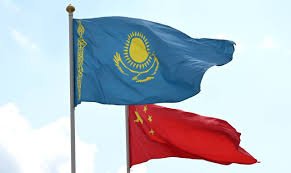Astana: PonteSud – News Desk
For much of the post-Soviet era, Chinese influence in Central Asia was met with deep skepticism. In Kazakhstan and its neighbors, public opinion often bristled at the specter of a rising China next door.
Memories of historical incursions and fears of economic domination led to wariness about Chinese investments and intentions.
Yet the story of the past several years has been one of gradually transformed perceptions. Consistent, respectful engagement by China has slowly chipped away at old suspicions and built new trust.
Beijing did not respond to Central Asian wariness with defensiveness or dominance, instead, it doubled down on patience and respect.
Chinese officials made a point of acknowledging Central Asian nations as equal partners, repeatedly emphasizing mutual benefit and non-interference.
Major initiatives like the Belt and Road were framed not as Chinese expansion but as a shared opportunity for development.
This consistent good-faith approach has elevated Beijing’s stature from a suspected threat to a trusted partner in the eyes of Kazakhstan’s leadership and much of its public.
One of the most compelling aspects of the Kazakhstan, China partnership is that deeper strategic cooperation has not come at the expense of other relationships.
Kazakhstan offers a textbook example of how a middle power can broaden ties with a great power while keeping its foreign policy multidimensional.
Closer ties with Beijing have not led Astana to shun Moscow, Washington, Brussels or Ankara.
On the contrary, Kazakhstan has proven that strategic cooperation need not mean exclusivity, it means engaging all partners on the basis of mutual benefit.
This principle was on full display at the landmark Central Asia–China summit held in Astana in June 2025.
The summit concluded with a watershed agreement the signing of the Treaty on Eternal Good-Neighborliness, Friendship and Cooperation between China and all five Central Asian republics.
This multilateral treaty formally commits the six countries to long-term friendship, non-aggression, and collaborative development.
Just a few years ago, such a pact would have seemed far-fetched, regional capitals might have bristled at binding themselves to China in this manner.
But the fact that every Central Asian leader signed on enthusiastically speaks volumes about how trust has replaced threat perception.
The treaty’s very title, invoking “eternal good-neighborliness”, underscores that these states now see China not as a hegemon to guard against, but as a neighbor to embrace for generations.
Notably, this new Central Asia–China pact is not an exclusive bloc or alliance. It doesn’t require Central Asians to sever or downgrade ties with any other power.
Instead, it creates a framework wherein deeper regional cooperation with China reinforces each nation’s sovereignty and stability, which in turn allows them to engage confidently with all partners.
In President Kassym-Jomart Tokayev’s words at the summit, Central Asia and China have achieved the level of an “eternal strategic partnership,” a relationship durable enough to weather global storms without demanding fealty or exclusivity.
This approach stands in stark contrast to the zero-sum mentality that often pervades great-power competition. There is no hint of “you are either with us or against us” in the China–Central Asia dynamic.
Kazakhstan can welcome massive Chinese investments and security assistance, and in the same breath, cooperate with the United States on energy or with Europe on technology and education.
Astana has shown that engaging a great power like China can be additive, not subtractive, to a middle power’s foreign policy.
The burgeoning China–Central Asia partnership is all the more remarkable given the backdrop of today’s world. Traditional global security frameworks are crumbling, and multilateral institutions are under strain.
From the collapse of arms control treaties to waning trust in international bodies, the world order is fragmenting. Major powers frequently find themselves at odds, and smaller states often feel forced to pick sides in an increasingly polarized environment.
Yet here in the heart of Eurasia, Kazakhstan and its neighbors have charted a different course, one where a group of middle powers engage a great power on their own terms to create new security and development mechanisms.
The Treaty on Good-Neighborliness is one such mechanism, it effectively establishes a six-nation regional security and cooperation club anchored not in ideological alignment but in practical mutual interest.
At a time when big-power rivalry is heating up elsewhere, Central Asia and China have cultivated a zone of geopolitical calm and constructive engagement.
This sends an implicit message to the world: even amid global fragmentation, it is possible to build inclusive partnerships that emphasize dialogue over division.
This positive tone is not born of naivety about international affairs, but rather from a deliberate strategy by Kazakhstan to shape great-power behavior for the better.
By engaging China constructively, Astana has helped steer Beijing’s regional role toward building roads, schools and pipelines instead of building spheres of influence or bases.
In the process, Kazakhstan has preserved its own independence and advanced its people’s well-being, all while maintaining friendly ties with all the major centers of power.
This is the hallmark of a confident middle power, one that uses diplomacy, dialogue, and initiative to guide the terms of engagement with even the mightiest of partners.







